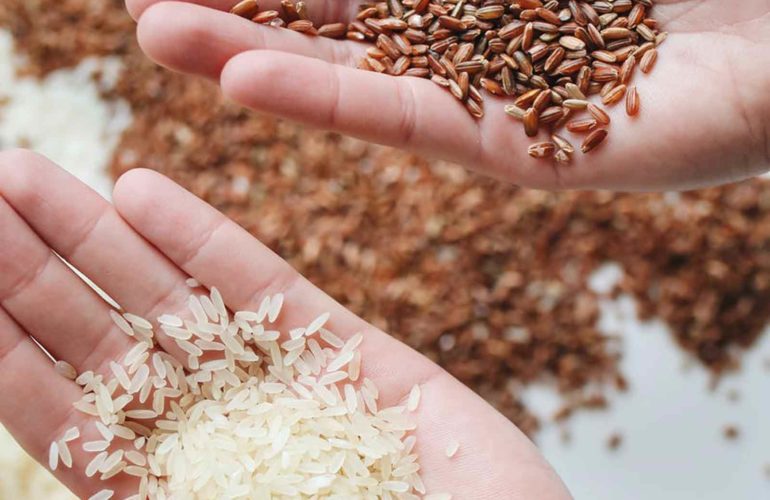Rice specially white rice is one most of the most consumed grain in the world. Many countries inspite of being a predominently rice eating country still have low obesity rates. So what is deal with white rice ? In this article we’ve tried to answer the questions about white and brown rice.
General Facts
- Rice offers a nimber of vital vitamins to the body
- There are different types of rice white, brown, black, purple and red
- It is one of the most common grains in the world
Myths and Facts
- Rice has too much starch : Cooked rice has less than 10 % starch left. Starch is a source of energy and we need it
- Rice has high glycemic index : We traditionally never eat rice alone. When you mix it with dal, sabzi, dahi and ghee, the glycemic index gets lower considerably
How does rice help you lose weight ?
- Rice is high in lysine, an essential amino acid that is missing or found in very low quantity in other grains
- It is high on the protein digestibility score
- Lysine also helps in making the human growth hormone
- Rice has inositol, which has fat burning, stress reducing properties
- Rice is good for your skin and hair
- Rice is a good source of methionine, which is required to break down fat in liver
White vs Brown rice
- All whole grains are composed of three major components bran, germ and endosperm
- Brown rice contains both the bran and germ where as white rice has both bran and the nutritious germ removed
- Brown rice has a glycemic index in low 50s where as white rice has a glycemic index in high 70s
- Brown rice has a very low shelf life (6 months) where as white rice has a shelf life of upto 10 years
- Brown rice is difficult to digest where as white rice is easier to digest
- Brown rice takes longer to cook where as white rice gets cooked faster and tastes a little better
- Brown rice is high in phytic acid which hinders the absorption of calcium, iron, zinc and other minerals where as white rice is low in phytic acid
- Brown rice is also high in arsenic which may lead to number of chronic diseases where as white rice is low in arsenic
- Brown rice should be avoided if you have poor digestion or bladder issues where as white rice should be avoided if you’re diabetic
Tips for including rice in diet
- Exercise strict portion control
- Pair rice with lots of vegetables, dal and legumes
- Soak the rice before cooking and wash it 3-4 times
- Opt for low calorie cooking methods : plain boiled or steamed rice instead of fried rice
- To enhance the flavour of brown rice, you can try cooking it in coocnut water instead of plain water. This would add a sweet, nutty taste
- Avoid reheating rice, eat witnin one hour, reheating might lead to food poisoning
